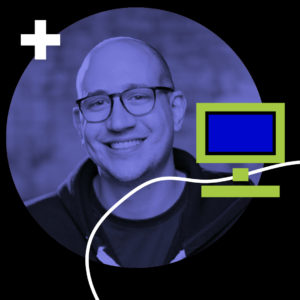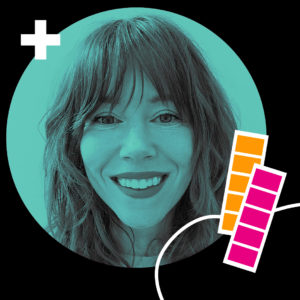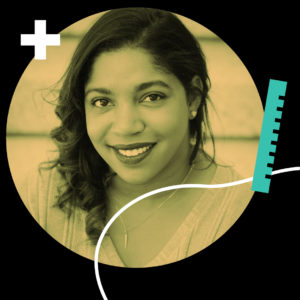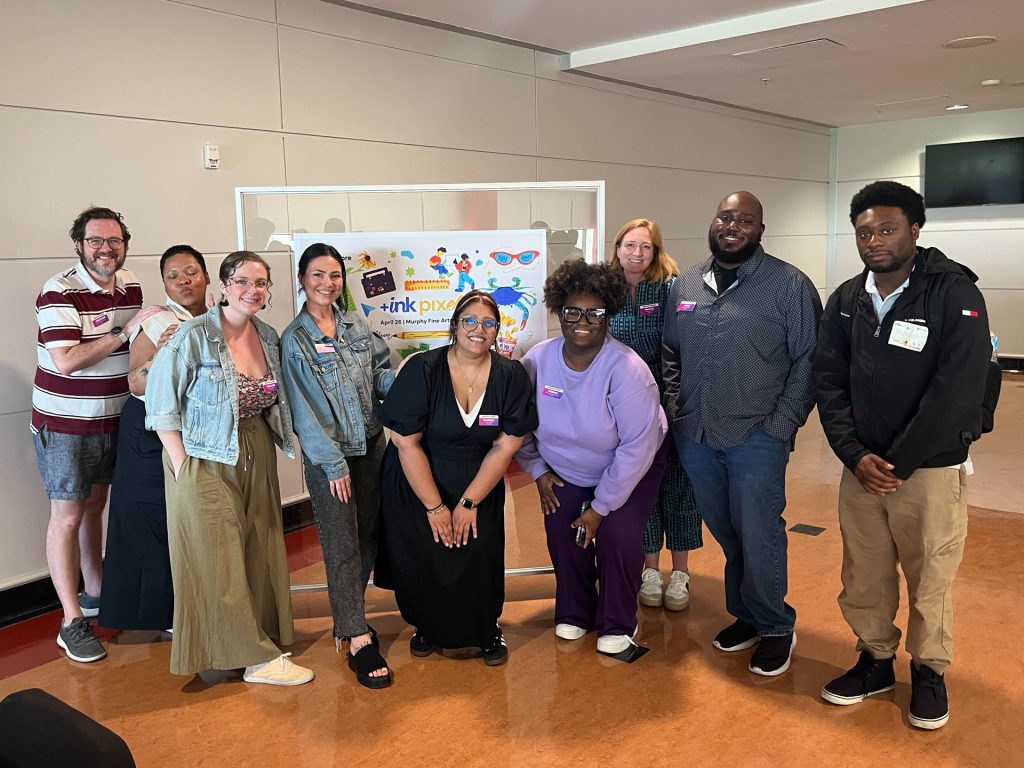On Saturday April 23rd, 2022, AIGA Baltimore held a virtual panel discussion for Ink & Pixels, “From Portfolio to Offer: The Art of Getting Hired”. The discussion featured a fantastic group of established professionals while talking about how to rethink and refine your approach to getting hired in the creative industry. There was lots of insight on the dos and don’ts of resumes, portfolios, and interviews as well as the other things to keep in mind that Google doesn’t tell you.
The panel included Nate Brubaker, Owner & Executive Producer at Rock Shore Media; Jordan Watts, Director of Design at Fearless; Amy Quarles, Creative Director at Visit Baltimore; and Hilliary Turnipseed, Director of Recruitment & DEI at Subject Matter and Founder of Hill Street Strategies, and was moderated by Nhu Nguyen, Vice President at AIGA Baltimore and AVP, Creative Director at Fenton.
Career Values
What do you value? If you don’t know, start thinking about it. What do you value in your career? Some of our panelists noted that experience, respect, and a mission you can stand behind, is very important when looking for a career. Don’t forget to think about values in your personal life—especially a good work life balance. Workplace culture shouldn’t be stagnant. Just like the field of design is always changing, your workplace should be full of people who are also willing to change.
HR Advice
When applying for a job, be prepared and know where you are applying. We suggest having a document of when and where you applied and know about all of them. If you aren’t excited for the job application or if it doesn’t interest you, don’t apply! The interviewer will know if you don’t care or aren’t familiar with the company. Don’t hit apply if you wouldn’t be excited to get a call back.
When you graduate from college, you might not have the career experience you are looking for, but you should have some job experience.
Think about it:
- Have you had a job anywhere? Starbucks or anything at all?
- Have you done any passion projects? These make you stand out from the crowd.
- Have you completed an internship?
- Have you had a career shift? HR calls these nontraditional backgrounds with transferable skills. Talk about what underlying skills you have that will make you effective in this new role.
Make sure you are being seen, heard, and valued. If an offer comes in and it seems insulting—it is insulting. Negotiate and believe in your worth.
What happens if you miss the job application deadline? If the job is still posted online (such as Indeed or LinkedIn), just apply and go for it. Be sure to look for contact information and email the person hiring to let them know you have applied to the job.
Embrace the Change: Seize the Opportunities.
Hillary embraced that you don’t have to explain your career gap in a global pandemic! If the employer asks about your gap, that may be a potential red flag. If you do want to explain—it’s ok to be your authentic self. Nhu noted, “feel free to be authentic. If you need to take time off for family, or for yourself, you can say this.”
Sometimes it’s okay to fake it until you make it. If you are learning something new like photography, just keep welcoming new opportunities (school project, client project, etc.). This is how you can bring your ideas to the table.
Networking
There are lots of ways to network and create connections—make connections in real life at events or online via LinkedIn, Twitter, etc.! Always be in conversation, always be there to support people. Create GENUINE connections. There might not be an immediate benefit, but it can come back around. Connect with them because you share a commonality.
Cover Letters & Resumes
When you are creating your cover letter, make it personal so you can stand out. Make sure to show yourself in your cover letter with your passions, personality, and values. Go deeper into what you have learned and how it applies to the specific company. Go through each of your resume bullet points and see how it can apply to the job. Don’t forget to address the cover letter correctly, including the right person and the correct company.
Each of these pieces (cover letter, resume, portfolio) are just one piece of the puzzle. Some employers will look holistically at the candidate, look at the outcomes, and look beyond their title. As Jordan explained, “The cover letter is a great place to explain your “why” and have a personal letter to your hiring manager.”
When designing your resume, don’t overthink it or overdesign it—assigning a percentage to a certain skill or software is often not recommended (for example, 56% in Adobe Photoshop is confusing). Instead, keep it simple and add your skills/software in bullet points. We also recommend having a PDF copy as well as a simple Microsoft Word copy—sometimes the PDF won’t work on certain applications when you have to apply online. Make sure your resume can be printed, no tie dye backgrounds or lots of color in the background, keep it simple!
Portfolios
A few things to consider when deciding your portfolio platform: What is the cost? How easy will it be to update over time? For you, this might be a PowerPoint presentation, or it might be a website.
There are lots of ways to present your work (printed portfolio, website, Behance, slide deck/PDF) but you want to showcase your work in a simple and organized way. Make sure you present in a way that is efficient, effective, and clean. When presenting, have something that is ready to go and doesn’t require WiFi. If you’re an animator, don’t have a print portfolio. If you are creating a portfolio with Google Slides/Keynote/PowerPoint, make sure to save and send as a PDF for a more professional look.
If your portfolio is on a website, make sure it’s mobile friendly (you never know what device the employer is using!). The moment a recruiter or hiring manager is faced with a difficulty (such as a website not loading or doesn’t have the PowerPoint software to open your .ppt presentation), they will more than likely move on to the next candidate.
If it’s a team project, make sure to specify what you were responsible for. Keep in mind that most people assessing your projects are likely not to spend more than 5 minutes looking at a specific project—be sure to be prepared to talk about each project.
You can find more information about the number of projects, and what to include (don’t forget process and sketches!), in this blog: Best Practices for Creating a Design Portfolio & Preparing for Interviews in 2022.
Interview Tips
When you are being interviewed, it’s not just the employer interviewing you—you’re also interviewing them. You want to make sure that they are a good fit for you. Always ask questions—especially questions about the company’s culture. Don’t forget to do some research on the company! Always be prepared.
What happens if you need special accommodations for your interview? For example, if you are deaf, you might prefer to meet in-person or on a video call. You can ask for accommodations in the comment section of the application or when they email you back. If you can’t find an email or if there is no place to add comments, try looking the company up on LinkedIn and see if you can message anyone. Again, it is totally reasonable to ask for the accommodations you need in order to have a productive interview—whether that is a permanent or temporary condition.
Our panelists shared their top advice for job applicants:
- Be genuine and authentic: Don’t be afraid to show your personality. Employers want to make sure you will be a good cultural fit.
- Know about the company: Show that you’ve done your research on the company you’re interviewing for and show a genuine interest in what their goals are and how you can contribute to their success.
- Your portfolio isn’t everything: Don’t just “let the work speak for itself.” Your portfolio is only half the battle. Make sure you are articulating your skills outside of your portfolio as well. How well do you work in a team? What leadership skills do you have? Are you good at managing multiple project deadlines?
Meet the Panelists
Nate Brubaker
Owner & Executive Producer @ Rock Shore Media
Nate developed a passion for entrepreneurship and the creative industry at a young age. According to Nate, the most rewarding part of creating Rock Shore so far has been the ability to grow his team and see them prosper.
Jordan Watts
Director of Design @ Fearless
Jordan has spent his career working to rebuild trust in government and public institutions. As the Director of Design at Fearless he leads a multidisciplinary design practice to help people deliver and get better government services.
Amy Quarles
Creative Director @ Visit Baltimore
Amy began her career as an in-house graphic designer at a labor union in Washington, D.C., and moved to the leisure and tourism marketing space in 2007 where she has been ever since. She works with one full-time, in-house graphic designer and marketing managers in a small group of freelance creatives—photographers, illustrators, stylists, and videographers.
Hilliary Turnipseed
Director of Recruitment & DEI @ Subject Matter
Founder @ Hill Street Strategies
Hilliary is a DMV area-based talent acquisition executive, with a rich background in early-stage technology startups, media and social impact organizations. She seamlessly integrates diversity, equity, and inclusion strategies into her work, with an emphasis on advocating for underrepresented/underestimated candidates and creating two-way interviewing experiences.
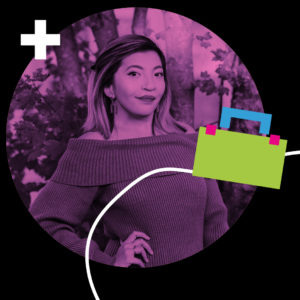
About the Moderator:
Nhu Nguyen
Vice President @ AIGA Baltimore
AVP, Creative Director @ Fenton
Nhu brings over 12 years of comprehensive experience within the multimedia, interactive, and traditional design space and creative industry to develop effective and impactful campaigns. She leads the creative team at Fenton, integrating strategy, effective design, and compelling storytelling to create memorable solutions that help grow brands and leave lasting impressions. Nhu has worked in a variety of different industries and is passionate about amplifying voices that are underrepresented.
Thank you to Kristin Kosmides, Nhu Nguyen, and Frances Miller for your help on this blog.

